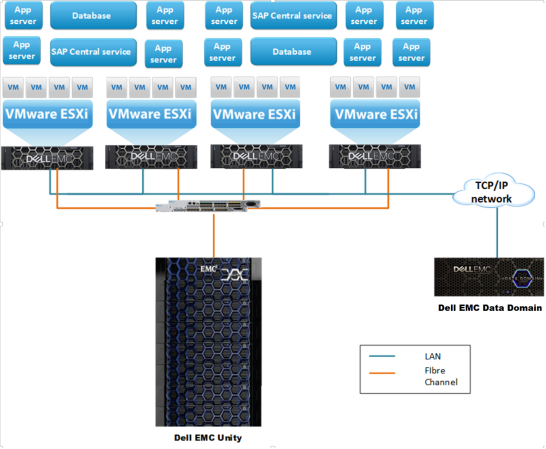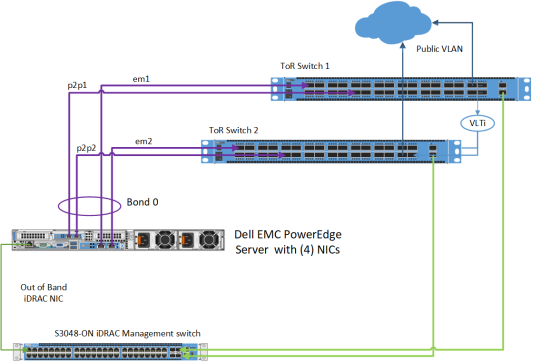Raid controller are devices of hardware or programs for software that helps in the management of hard disks or solid-state drives. Its purpose is to work as a logical unit for storage. These controllers extend data protection and have a positive impact on computational performance by increasing the speed at which accesses the data.
The raid controllers from intel help achieve storage solutions in a customizable manner. This helps meet the unique needs of any business. This system has the validation of various platforms, and its installation is seamless and interoperable. Great quality in the product and also found to be very reliable when combined with the support and comprehensive services of Intel, helping in achieving better productivity, protection of data, and more simple IT solutions using RAID.
The RAID solutions have been developed by intel to cater to the needs of a variety of different types of workloads. Intel can offer the perfect RAID solution for any workload used for storage.
You can note the solutions below.

Intel controllers for RAID –
Intel-based RAID controllers are available in a variety to meet all market needs. Additionally, various technical information, such as forums and documents, has been provided to support the platform.
Trimode and storage controllers have now brought the PCIe hardware to the RAID hardware.
The full-featured RAID has been designed to efficiently manage intensive workloads with minimal downtime. These cache backups require no maintenance and come with options for SSD caching and disk encryption.
Entry-level RAID provides the reliability of RAID at a price that is far more competent.
Storage controllers are designed to achieve software-defined storage. This is crucial and can only operate in JBOD mode.
VROC is Intel® Virtual RAID on CPU (Intel® VROC) which is RAID Solution for enterprises and has neem designed for NVMe SSds and reliability and maintains its performance.
When you have to choose the controller of the storage, it is wise to consider the demands of performance and needs along with the budget one can afford. There are a few hardware features that are critical to performance.
Controller cache –
There are two types of cache available for the controller for high performance. These caches include read cache and write cache. You can configure the write cache in two modes: write-through and write-back. The default setting is write-back mode, which is specifically used for hard disk drive configurations. Writing back enables faster completion of I/O and enhances overall disk performance. The write-through mode helps optimize architectures with low latency but high performance and uses SAS and SATA disks. The read cache is configured as both ‘no read ahead’ and ‘read ahead’.
NVMe SSDs –
These are becoming a dominant factor for missions that have critical applications. This interface helps in running flash freely. In this manner, removing the floodgates for the flash overcomes the bottlenecks of SAS and SATA interfaces, introducing new architectural challenges. Intel VROC helps the SSDs have direct contact and access with the CPU and removes the requirement for HBA completely. This has simplified the paths of data and the component requirements to maximize the utilization of the SSDs used by the servers.
Intel VROC –
They sell this as a physical key, offering it in three SKUs. In addition to the license, you will also need Xeon CPU scalable processors, SSDs, and a compatible server. While various companies widely support VROC, some server vendors prefer using card-based technologies for more effective drive management over this modern alternative.
Much thanks to the credit of Intel VMD for offering drive serviceability which is critical and can be simplified without losing out on reliability. Thanks to this, you can easily swap or exchange the SSDs without causing any interruption or requiring a reboot. The VMD helps in the redirection of insertion of PCIe and their removals to the aware drivers of the RAID storage, and these drivers are qualified for the best handling of such events. In times of failure, it can become very difficult to identify the failed unit amongst the many units’ inactive functions. This is also often made worse by bad vendor practices, resulting in wrong labeling.
FAQs
1. What are Intel SAS RAID solutions for enterprise-grade storage?
Intel SAS RAID (Redundant Array of Independent Disks) solutions are designed to provide high-performance, reliable, and scalable storage solutions for enterprise environments. These solutions utilize Serial Attached SCSI (SAS) technology to connect multiple hard disk drives (HDDs) or solid-state drives (SSDs) into a single logical unit, offering data protection, increased performance, and flexibility in storage configurations.
2. What types of RAID configurations are supported by Intel SAS RAID solutions?
Intel SAS RAID solutions support various RAID levels, including RAID 0, RAID 1, RAID 5, RAID 6, RAID 10, and RAID 50. Each RAID level offers different combinations of performance, data redundancy, and capacity utilization to meet the specific requirements of enterprise storage applications.
3. How do Intel SAS RAID solutions ensure data reliability and protection?
Intel SAS RAID solutions employ redundant disk configurations and parity schemes to protect data against disk failures. Depending on the RAID level selected, these solutions use techniques such as mirroring, striping with parity, or a combination of both to ensure data integrity and availability even in the event of drive failures.
4. What performance benefits do Intel SAS RAID solutions offer for enterprise-grade storage?
Intel SAS RAID solutions enhance storage performance by distributing data across multiple drives and leveraging parallel access to improve read and write speeds. Additionally, these solutions support features such as cache acceleration and intelligent caching algorithms to further optimize performance for specific workloads.
5. Can Intel SAS RAID solutions be integrated into existing enterprise storage infrastructures?
Yes, Intel SAS RAID solutions are designed for compatibility with a wide range of server and storage platforms, including both hardware-based RAID controllers and software-based RAID configurations. They can be seamlessly integrated into existing enterprise storage infrastructures, providing flexibility in deployment and management.
6. How does Intel support enterprise customers in deploying and managing SAS RAID solutions?
Intel offers a suite of management tools and utilities to facilitate the deployment, configuration, monitoring, and maintenance of SAS RAID solutions in enterprise environments. These tools provide features such as RAID configuration wizards, health monitoring, predictive failure analysis, and remote management capabilities to simplify storage administration and ensure optimal system performance.
7. What are the key considerations when selecting Intel SAS RAID solutions for enterprise-grade storage?
Some key considerations include:
- Performance requirements: Assess the performance needs of your enterprise applications to determine the optimal RAID level and configuration.
- Data protection requirements: Evaluate the level of data redundancy and fault tolerance needed to ensure data integrity and availability.
- Scalability: Consider the scalability of the RAID solution to accommodate future growth in storage capacity and performance demands.
- Compatibility: Ensure compatibility with existing hardware and software components in your storage infrastructure.
- Support and maintenance: Evaluate the availability of support services, firmware updates, and documentation to facilitate ongoing maintenance and troubleshooting.





